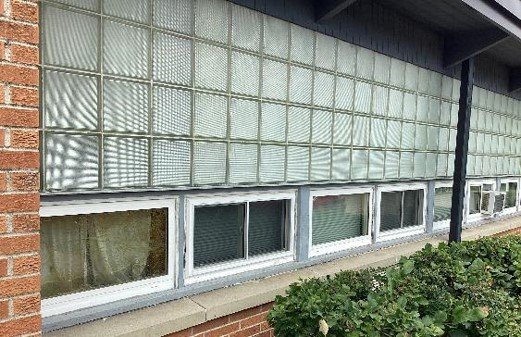
Why is Valley-Edinburg School District proposing a referendum?
Since the merger of the Valley and Edinburg School Districts in 2010, Valley-Edinburg Schools have been challenged by the maintenance and logistical needs of operating three separate school buildings. These challenges negatively impact our ability to improve education for our students. Over the last two years, our district has undergone the process of identifying the various challenges facing our buildings.
Student learning is impacted by the age and limitations of our current buildings
Our school buildings are between 66 and 86-years-old. As they age, they inevitably require more maintenance and repairs, which puts strain on our district’s budget. Their learning spaces are also increasingly outdated and inadequate as standards for safety, accessibility, and student learning change. Some of the challenges present across our district include:
Inadequate Accessibility: As a New Deal-era building, the Crystal Building lacks essential accessibility features, like an elevator and bathrooms on all floors. The top floor is nearly or completely inaccessible to those with limited mobility. In several cases, those with injuries or other medical impairments have faced serious challenges to their daily routines. Accessibility issues are also present in the Edinburg and Hoople buildings, particularly in locker rooms and playgrounds.
Safety and Security: School entryways are currently controlled with a basic buzzer system. Without a vestibule or check-in area, our ability to screen visitors who enter during the school day is limited. This gives visitors immediate access to entire buildings as soon as they are let in the door. The dropoff areas for our schools can also be redesigned to improve general traffic flow and pedestrian safety.
Athletics Spaces: Our athletics spaces are undersized, which creates safety hazards for athletes and spectators alike. Condensation on the floor at the Crystal Gym, caused by poor ventilation and limited space, poses a serious hazard. Our district is also unable to hold multiple practices or competitions at the same time, so teams regularly need to compete for practice space. This leads to inconvenient practice and game schedules for families, coaches, and spectators.
Undersized Classroom Spaces: Many of our classrooms are at capacity and/or are below the recommended square footage. This is especially an issue in the Crystal building, where classrooms are 200-300 square feet smaller than our other buildings.
Lack of Breakout/Collaborative Space: Our schools lack secondary spaces for individual or small group work outside of classrooms. This limits teachers’ ability to work one-on-one with students without distractions.
Staff Preparation/Collaboration Spaces: A number of staff do not have their own workspace to prepare for lessons. In some cases, closets and other non-office rooms are repurposed as preparation spaces, which further impacts our ability to use these spaces for their original purposes.
Inadequate Cafeteria Spaces: Our schools lack proper cafeteria spaces that can be used without disrupting staff or student work. In some cases, students must eat in classrooms or hallways.
General infrastructure (windows, roofing, tuckpointing, interior finishes): As our buildings age, they have developed a growing list of needed maintenance. With limited dollars available for building maintenance each year, our district must exercise discretion with repairs. Aging windows, roofing, and exterior damage to bricks and concrete are expensive things to address and often can’t be covered with our annual budget.
Maintaining three separate buildings is an increasingly inefficient model for our district
Since the 2010 merger, our district has continued to operate all three of our school buildings. Over time, this has become increasingly more expensive as our buildings age, maintenance is needed, and general costs for education grow.
Operational Efficiency: The cost of owning, operating, and maintaining three school buildings is more expensive over time than operating two.
Travel Efficiency: Staff and administrators must frequently travel between schools, spending valuable time packing up, driving, and unpacking that could otherwise be spent with students. Additionally, the need to travel between three separate buildings is a major consideration for families who choose not to attend V-E and poses challenges for current families.
Busing Efficiency: All buses must meet in one location to transition from shuttle buses to rural route buses. This adds additional time to bus routes for students. The proposed referendum plan would allow us to run our routes more efficiently.
In response to these challenges, our district intends to propose an investment plan to voters that would make operations more efficient and improve learning spaces for our students.








